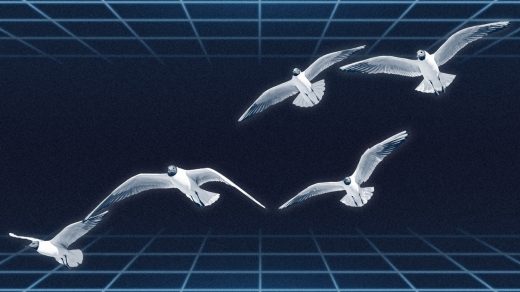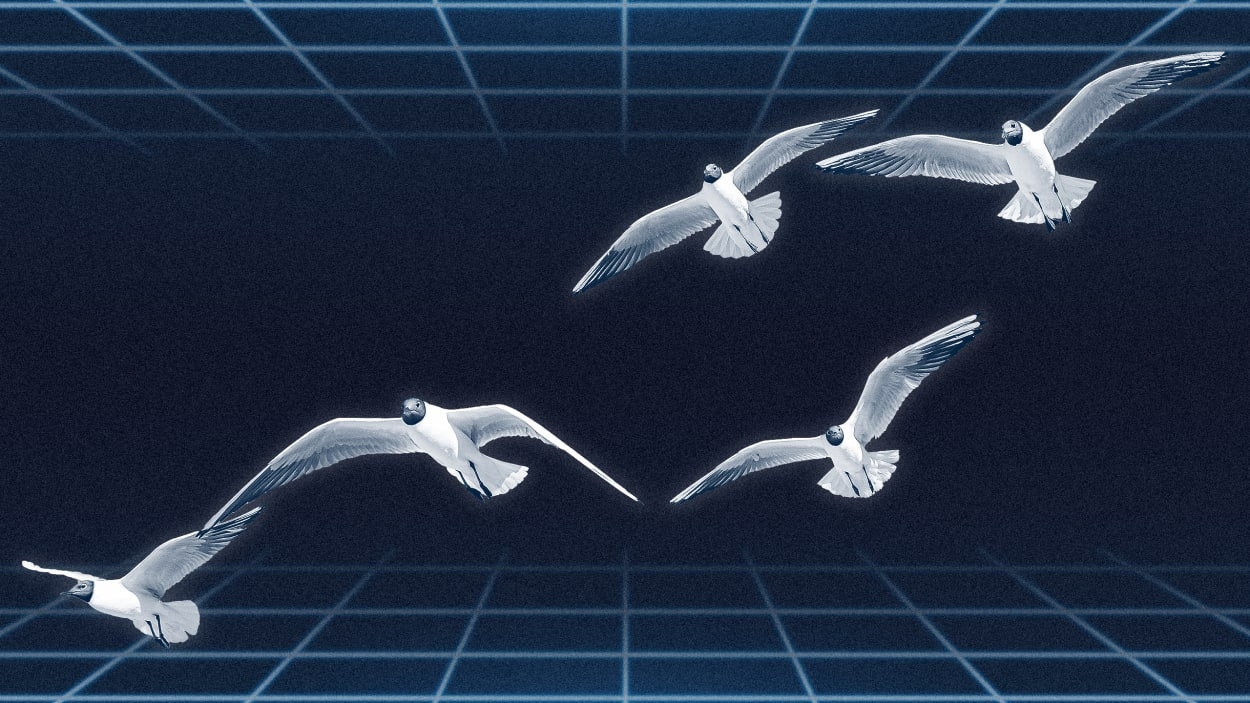Computer scientists say seagull algorithms could hide the secret to greener cloud computing
In the fabric of life, Mother Nature is a starkly efficient seamstress, able to weave together seemingly random strands of human, animal, and plant behavior into orderly patterns, loose threads forming a tight-knit tapestry that can withstand the eternal test of time. And as humankind has evolved into Renaissance beings seeking perfection in the disciplines of art and science, we’ve returned to our roots, extracting inspiration from nature’s designs.
We have engineered materials that are sturdier than ever, modeled after the oozing networks of the humble slime mold. And locomotive robots, propelled by the squishing trudge motions of an earthworm. And symmetric algorithms, which mimic the way shapes like snowflakes and sunflowers bloom spontaneously.
Now, a team of researchers from the United Kingdom, China, and Austria are looking to use the habits of seagulls to build better cloud computing systems.
In a paper published in Internet of Things and Cyber-Physical Systems, a journal from KeAi, which was founded in a partnership between Elsevier and China Science Publishing & Media, the researchers argue that using a “seagull optimization algorithm”—a so-called meta-heuristic algorithm that mimics the hunting and migration behavior of seagulls—can make cloud computing more energy efficient, cutting its power consumption by 5.5% and lightening its network traffic by 70%.
Their study attacks the problem of connecting cloud computing’s virtual machines to physical ones, as near-infinite streams of data must all flow through physical supercomputers that process each workload. They often converge in sprawling edge-cloud data centers run by industry giants, which are strategically scattered across the globe, because being geographically close to internet consumers who are using the cloud lets the digital signals buzz back and forth at a faster rate. These data centers are huge energy gobblers. In 2017, they ate up 416 billion kilowatt-hours of power, or about 2% of the world’s total electricity cost.
However, the researchers say that the way seagulls behave when they’re on the hunt for food or prey is one of the most ruthlessly efficient examples of an entity zeroing in on its target, with minimal excess energy expenditure. They suggest using an algorithm that imitates the habits of food-hunting seagulls to determine where to place virtual machines—which, in cloud computing, are like nodes that route multiple data workflows to the same physical supercomputers—within a network of server communications.
The idea is to make the network’s traffic as efficient (and thus as light) as possible. So, if the supercomputers are like seagull food—hapless freshwater fish or shrimp that exist in limited numbers, and swim only in certain parts of the ocean—then the virtual machines are like the stalking birds of prey, eyeing their precious objective (which is a connection to a nearby physical machine), and mapping a path to it with the blistering urgency of a hungry carnivore.
Seagulls do this while avoiding collisions with other seagulls, and their migration flight path over time naturally gravitates toward that of the fittest bird among them. When they lock onto a target and dive in for the kill, they vary their angle and speed deftly, resulting in a sort of downward spiral—calculated by study authors as a formula of cosines—that can predictably describe a striking seagull at any given time, relative to other seagulls in the area.
It’s not the first time that the biological genius of seagulls has been noted. In 2019, a paper in Knowledge-Based Systems outlined how the seagull-optimization algorithm could mathematically model solutions for stronger construction elements, from compressed springs to welded beams. It’s also not the first biomimicry-inspired solution in cloud computing: In 2022, researchers proposed an algorithm for virtual machine placement based on the behavior of bee colonies, another crop in the field of so-called swarm intelligence, a study that covers a spectrum of insect colonies and bird flocks.
In this case, study authors say that seagull-based algorithms could lower the total number of physical supercomputers needed across the world, and also cut the power consumption of the machine-to-machine communications network by 80%. Doing so would be a victory in sustainable cloud computing, in one battlefield of the war against climate change—which could someday mean more seagulls roaming the very real clouds of planet Earth, basking in brilliant blue skies.
(8)



